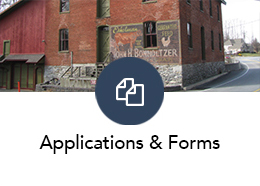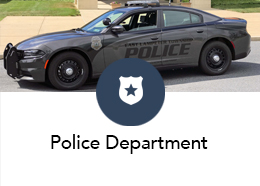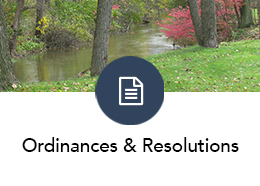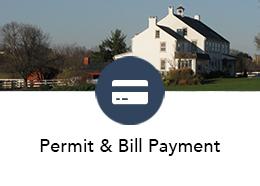What is the Stormwater Management BMP Self-Inspection-Program?
East Lampeter Township continues to implement our MS4 Permit while striving to make our program more efficient and effective. One of the enhancements introduced in 2021 refers to the annual inspection and maintenance of all Stormwater Best Management Practices in the Township. Property owners with a stormwater Best Management Practice, or Practices (which are also called “BMPs”) are required to do inspection and maintenance of their facilities. The new program permits qualifying property owners to add one step of reporting their status to reduce the need for Township representatives visiting all the BMP sites for annual inspections. Now, property owners can conduct the required inspection and provide their information to the Township using the “Annual Stormwater Management BMP Self-Inspection Form”
General Instructions
Provide the Township with yearly documentation of the condition(s) of your stormwater BMP(s), and certification that you are continuing to maintain the BMP(s) as written in your Operations and Maintenance (O&M) Agreement and/or Stormwater Management Site Plan O&M narrative.
Complete the self-inspection form when performing a dry-weather inspection of the BMP(s), recording any additional notes about the inspection or related maintenance activities on separate sheets of paper as needed. Complete the inspection and documentation by taking pictures of the BMP(s) demonstrating the condition(s) of the BMP(s). All documentation is to be submitted to the Township by June 1st of each year. Feel free to contact the Township for more information.
How to Inspect Stormwater BMP’s
Step 1. Review the O&M Agreement, O&M Plan, and or the applicable BMP design drawing for your site to become familiar with your BMP components and regular maintenance needs. These documents will show you what and where your BMPs are, what maintenance items to look for, and how to inspect and maintain the BMPs.
- BMPs installed for a Township Small Project Permit have an associated O&M Agreement on file with the Lancaster County Office of the Recorder of Deeds. The Recorder of Deeds Office is located at 150 North Queen Street Suite 315 in the City of Lancaster, PA. You can also search for documents recorded with the Deeds Office on their website at www.lancasterdeeds.com.
- Contact the Township if you would like a sample O&M Agreement.
- Residential and commercial developments, with BMPs built under a Stormwater Management Site Plan, Subdivision and Land Development Plan (SALDO), or Land Development Plan, should have had their BMP designs and O&M plans filed by their developer with the Lancaster County Office of the Recorder of Deeds at 150 North Queen Street, Suite 315, Lancaster, PA. These documents may also be searched and viewed on the Recorder of Deeds website at www.lancasterdeeds.com.
Step 2. Perform whatever regular maintenance tasks are required for your BMP to maintain regular functionality, such as cleaning leaf screens and debris filters, cleaning sediment traps and sump basins or pipes, replacing dead or dying shrubs or trees, repairing areas of minor erosion, and re-seeding all areas of bare soil.
Step 3. Inspect your BMPs on a dry-weather day, writing the results of your inspection on the self-inspection form. “Dry” weather means that there hasn’t been any rain, sleet, or snow in at least the 72 hours before the inspection, and the ground is not frozen or covered in snow.
Carefully check any pipes or drainage channels going to or from the BMP for signs of damage, blockages, and pollution. Inspect drain grates for debris accumulation, lose or missing pieces, and damage to any metal, concrete, asphalt, or plastic pieces. Check that rocky areas, such as those near pipe openings, have not silted in with soil or debris[CS1] , been covered over with yard clippings, have plants growing up through them, or that water hasn’t eroded channels along the sides or bottoms of the rock covered areas. Check the entire BMP area for any trash, weeds, and woody plants to be removed and holes, dips, and eroded areas to be filled in with clean topsoil.
Notes for underground BMPs: Your BMP may have an underground, stone-filled area that acts to quickly soak-away rainwater; this is called an “infiltration bed”. It is very important to frequently check and clean any pipes, roof drains, and yard and street drains going into the infiltration bed for debris and soil[CS2] . Check that the bottom of your infiltration area clean-out pipes, sump risers and observation ports do not have soil[CS3] or debris at least once a year. You can find the locations of your clean-outs and observation ports on your O&M Plan or BMP design drawing. Soil or debris[CS4] that gets into the stone-filled infiltration bed will clog the stones and keep rainwater from soaking through the area. Check that your infiltration area is soaking water away at least once a year by doing the following:
- The ground must be unfrozen, and you will need to wait for a long, hard rainfall to occur before you can check how well the infiltration bed can soak away stormwater.
- When it is still raining, or within 24 hours after it stops raining, open the lid of the observation port for your infiltration area and look at the water level in the pipe. Check the water level in the pipe again after about another 24 hours to see if any water remains in the pipe. If it rains again between pipe checks you will need to restart the pipe-checking process.
- If there is water in the pipe after 24 hours, check the pipe again after another 12 hours. You will need to have the underground pipes cleaned if there is water in the standing part of the pipe after the additional 12 hours. Re-do the rainfall-pipe inspection after the underground pipes have been cleaned to see if the system drains. You may need to consult an Engineer if water will not drain from the standing pipe after having the system cleaned.
Alternatively, professional septic servicing companies may be fully equipped and able to safely inspect and clean your underground BMP for you.
Step 4. Take pictures of the BMPs to show their condition. Mail, email, or hand-deliver the completed self-inspection form, the pictures of the BMP, and any additional inspection and maintenance notes or documentation to the East Lampeter Township Stormwater Department by June 1st.
C/O Stormwater Department
2250 Old Philadelphia Pike, Lancaster, PA 17602
Tel: (717) 393-1567 | Fax: (717) 393-4609 | Email Stormwater Staff






